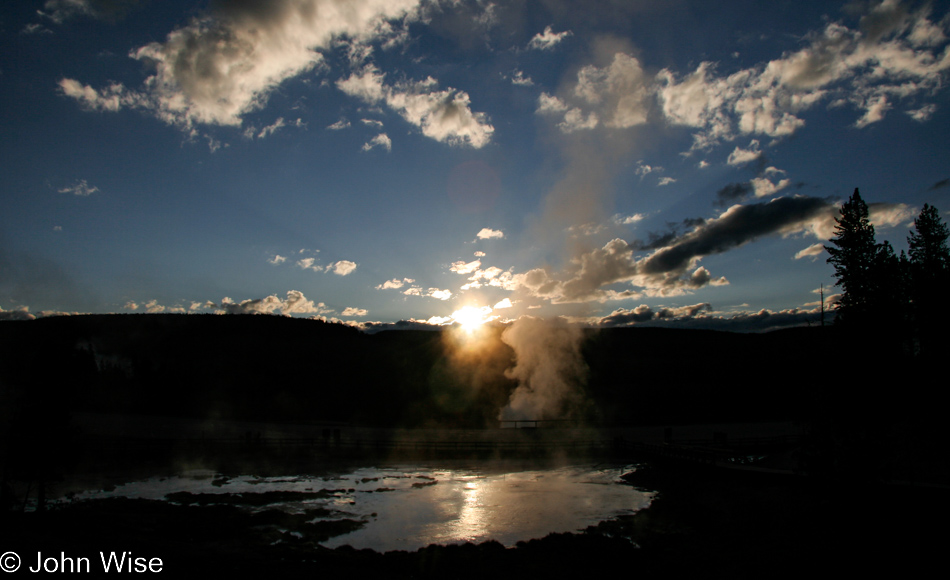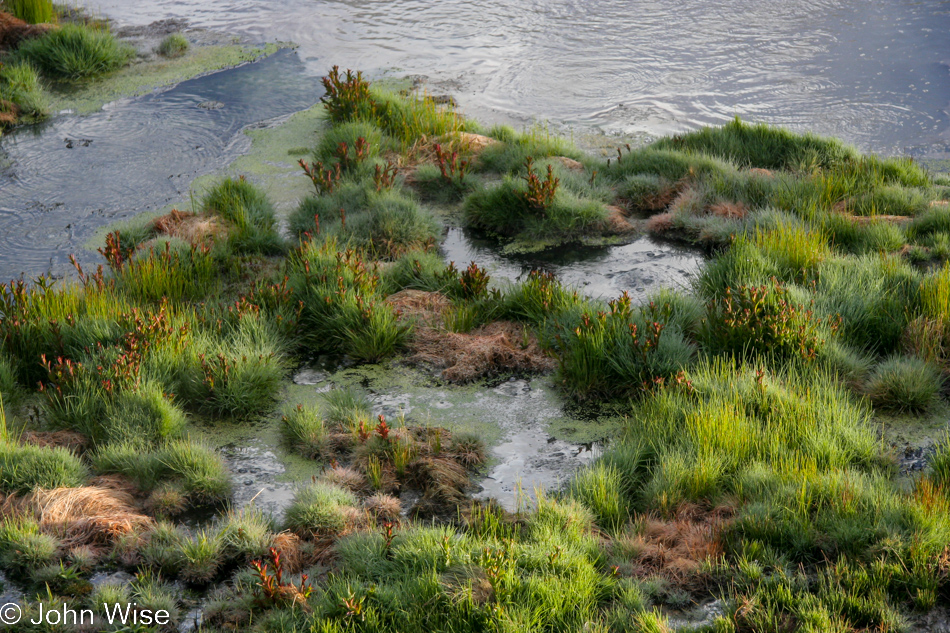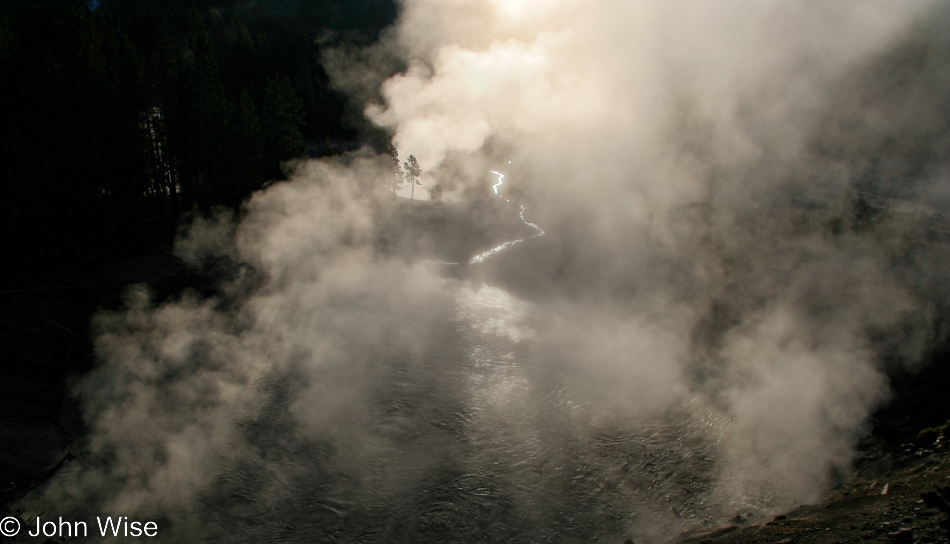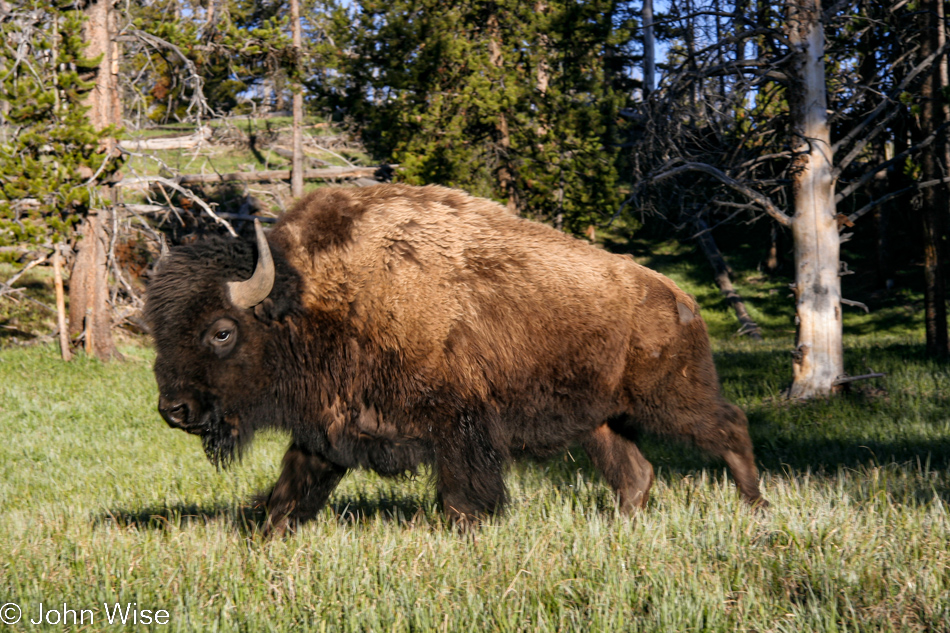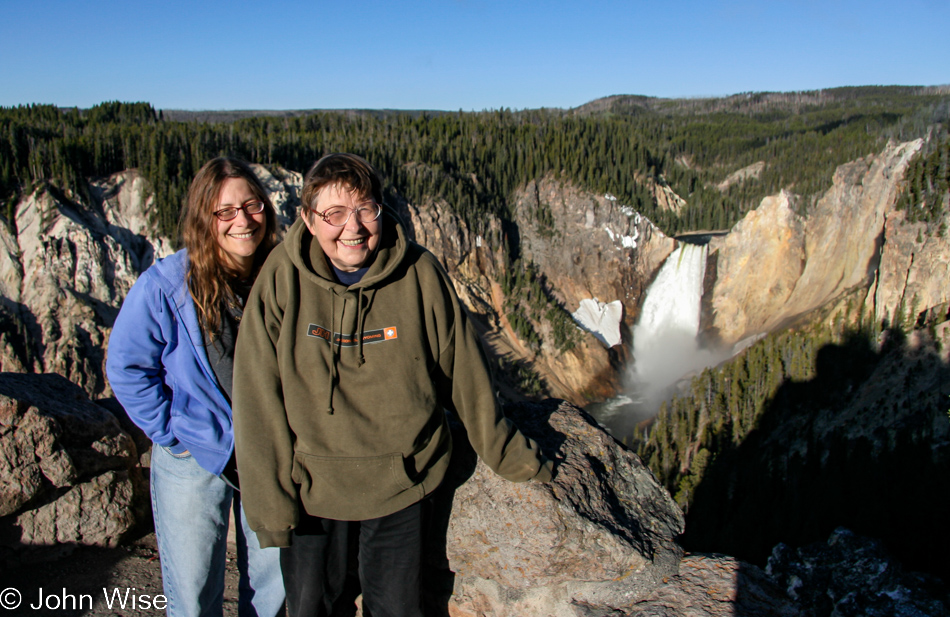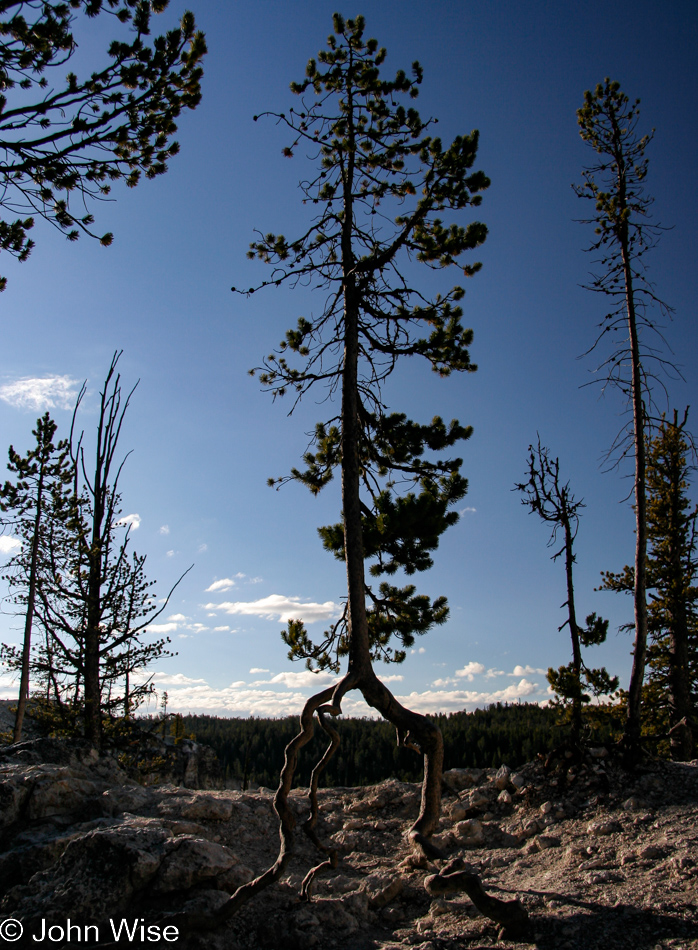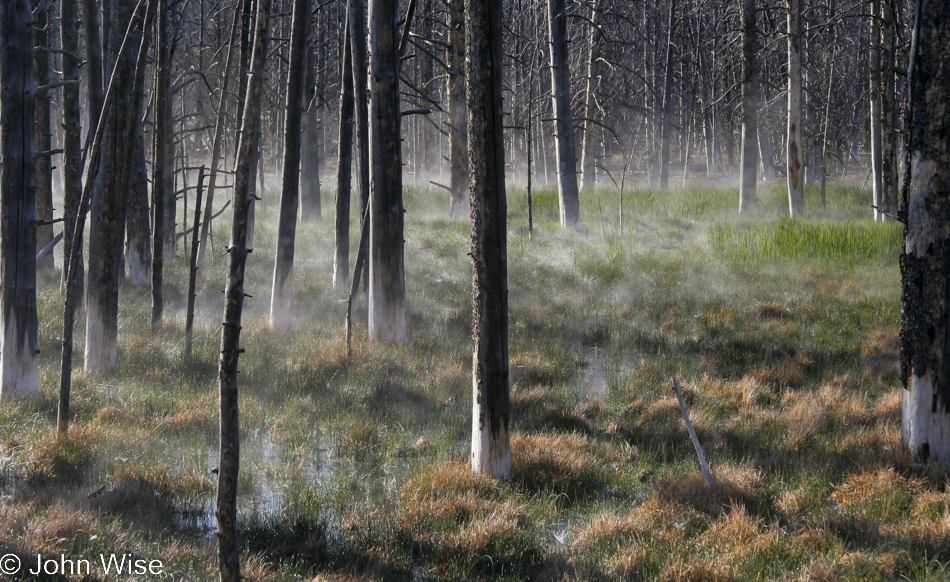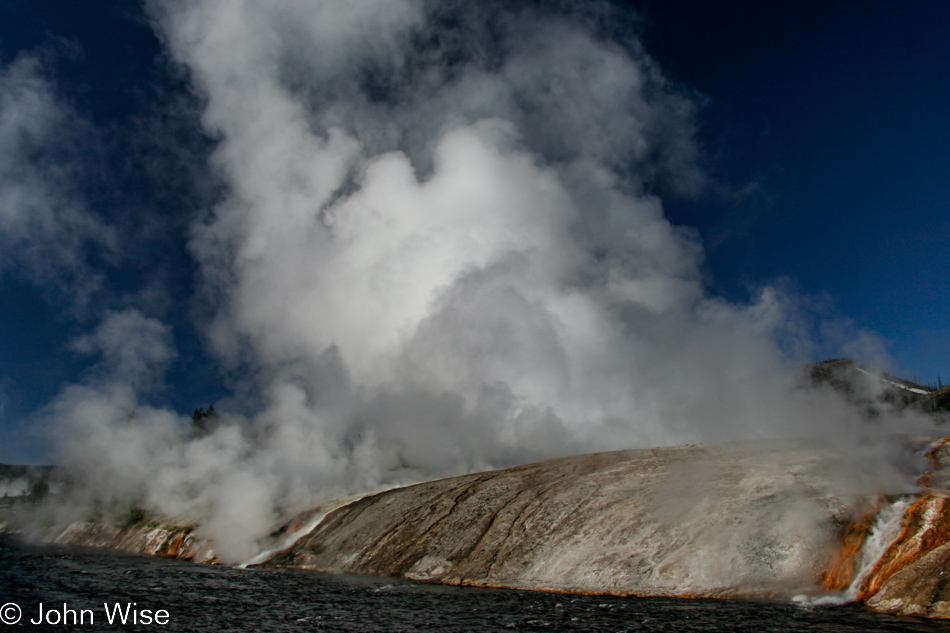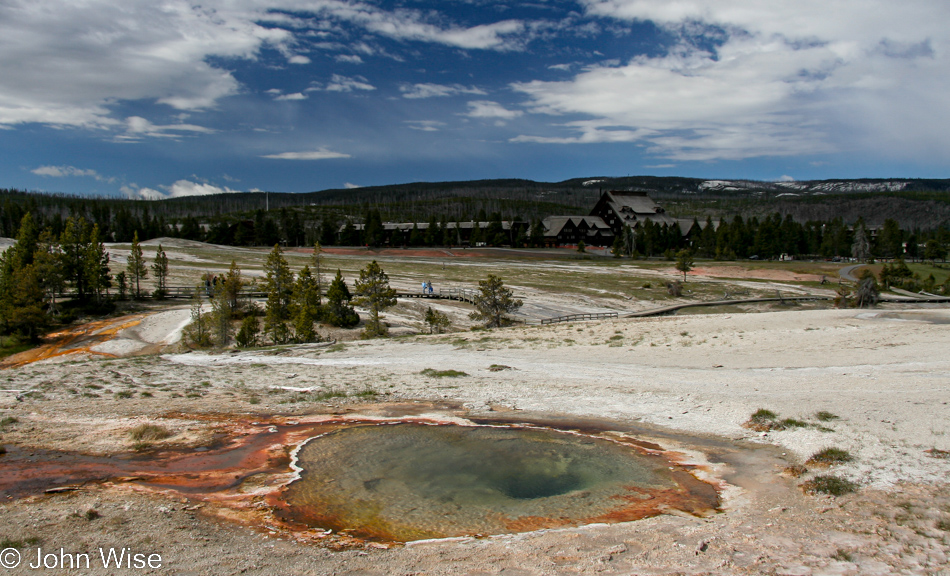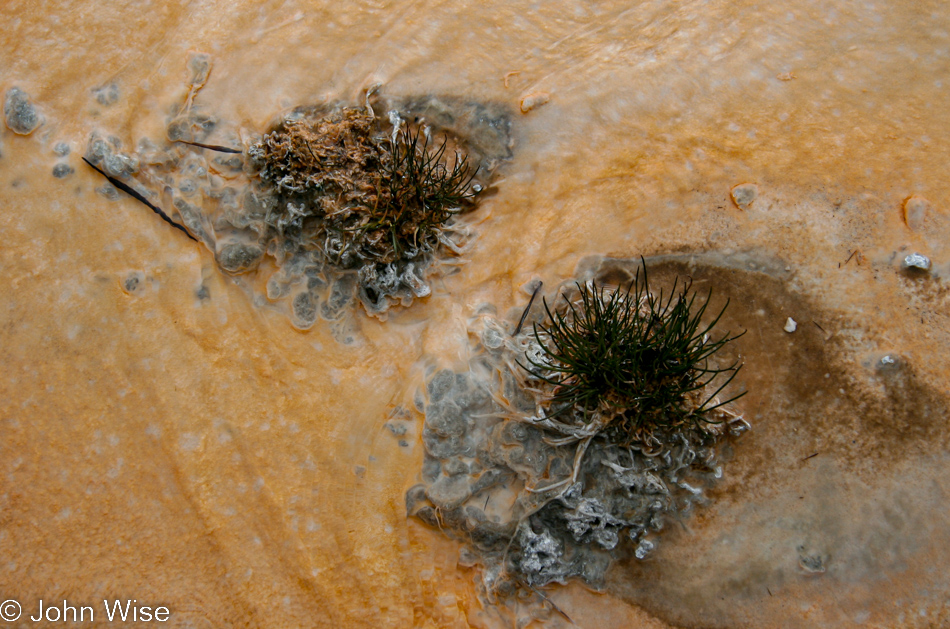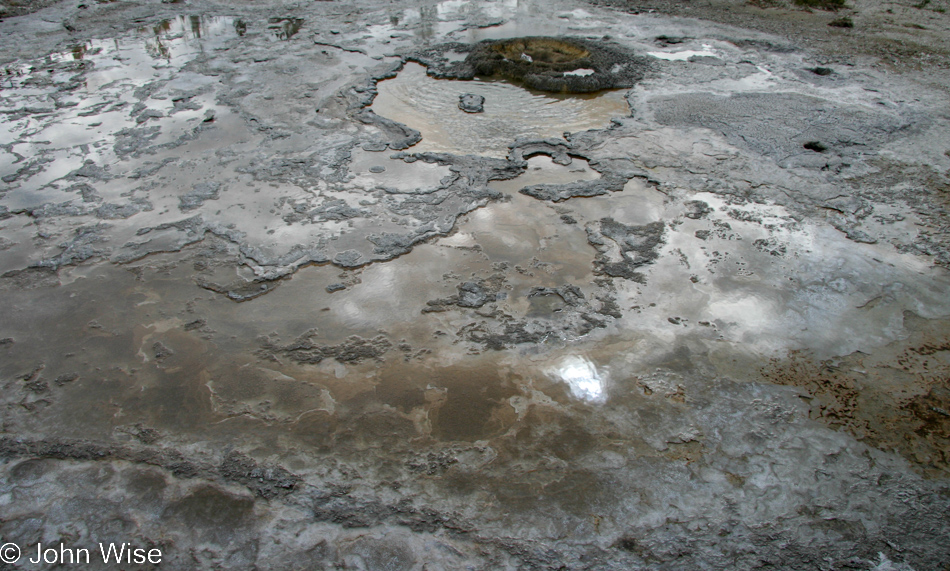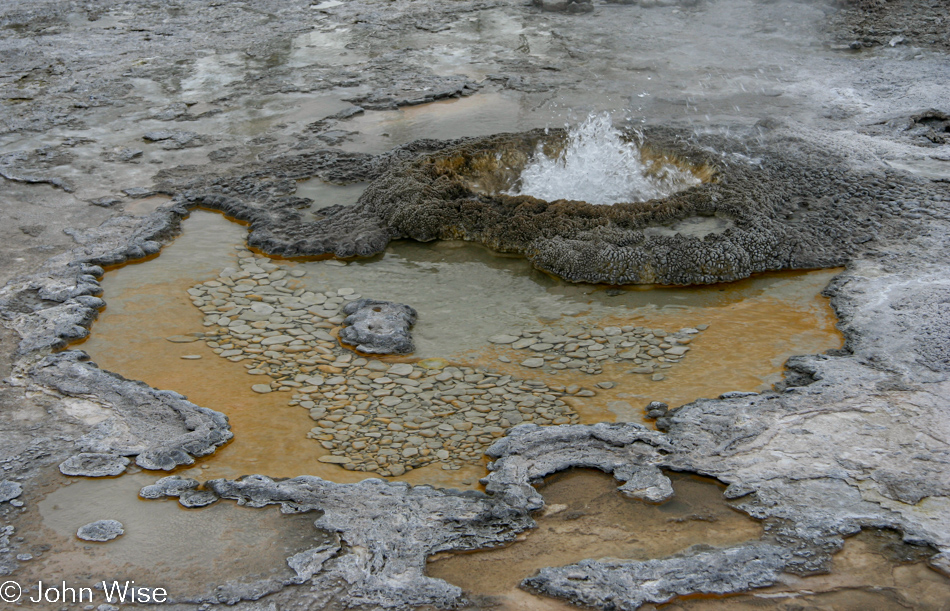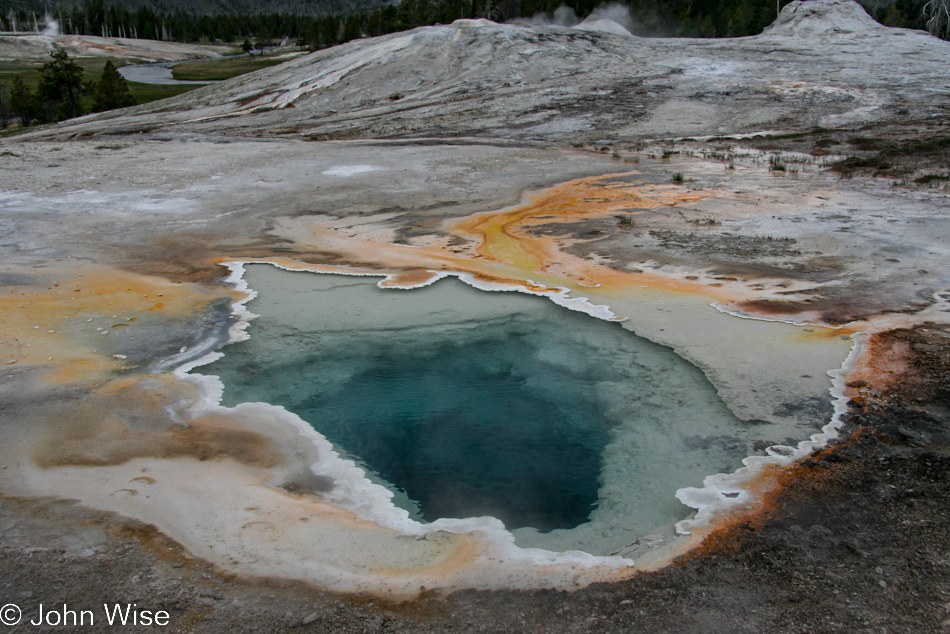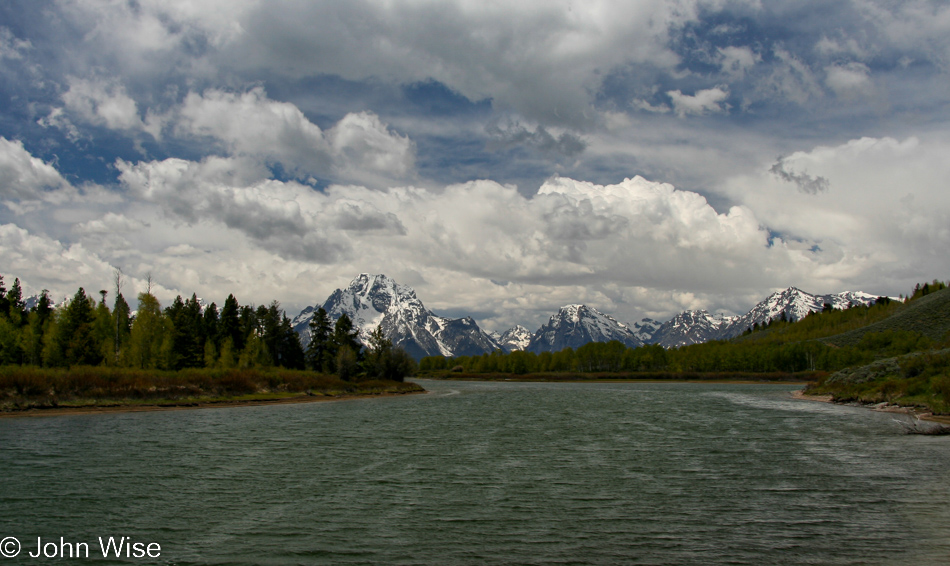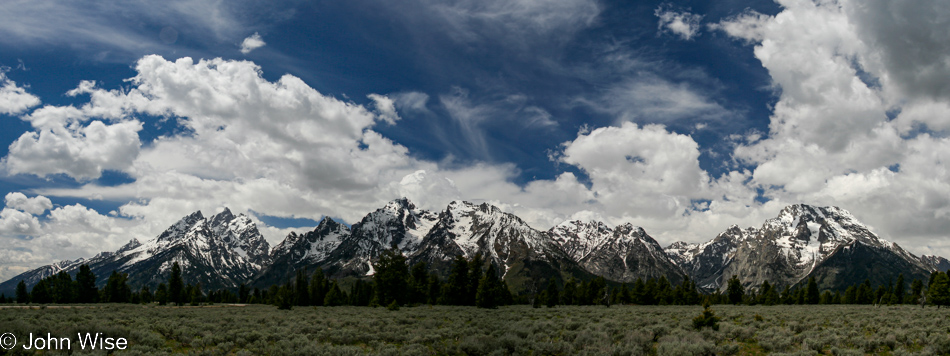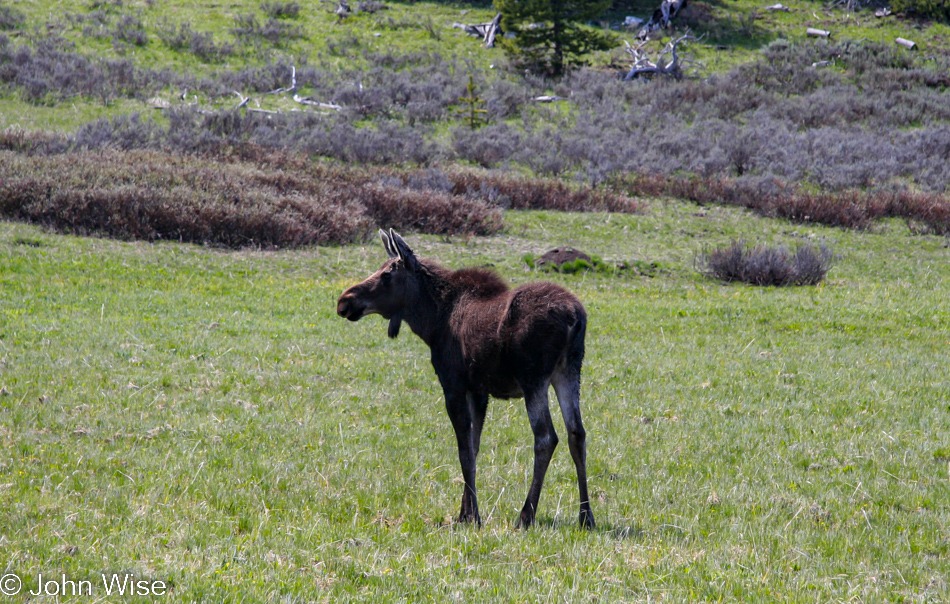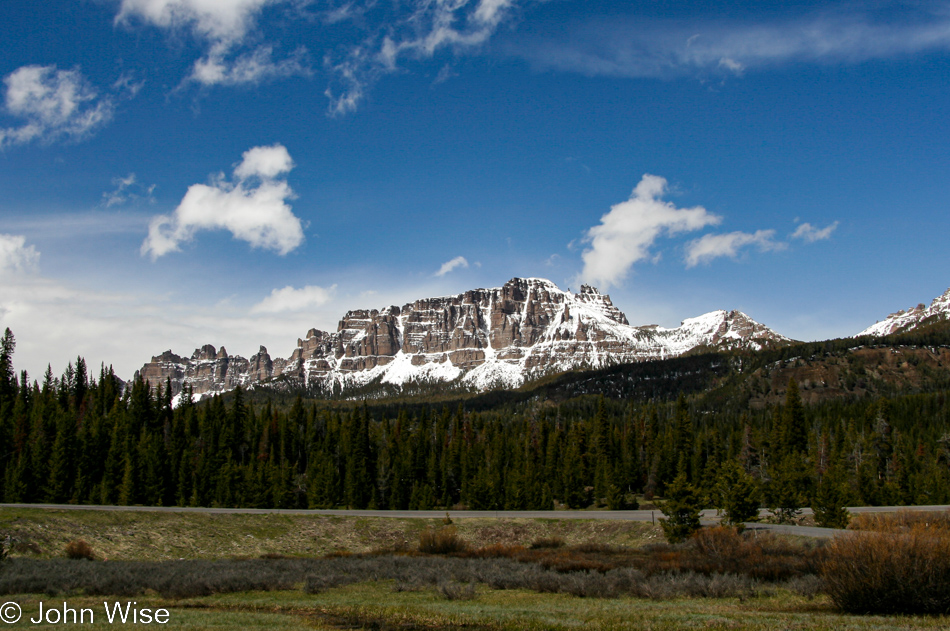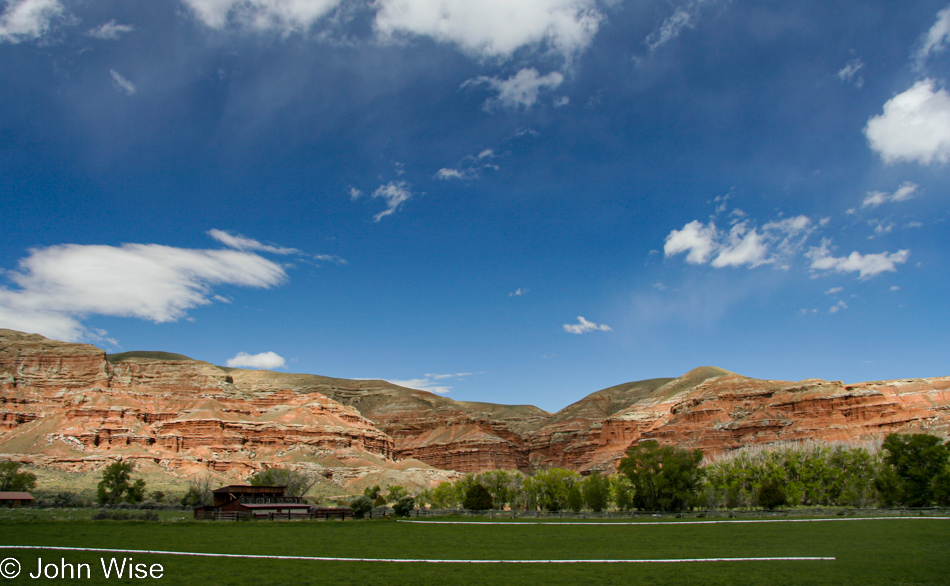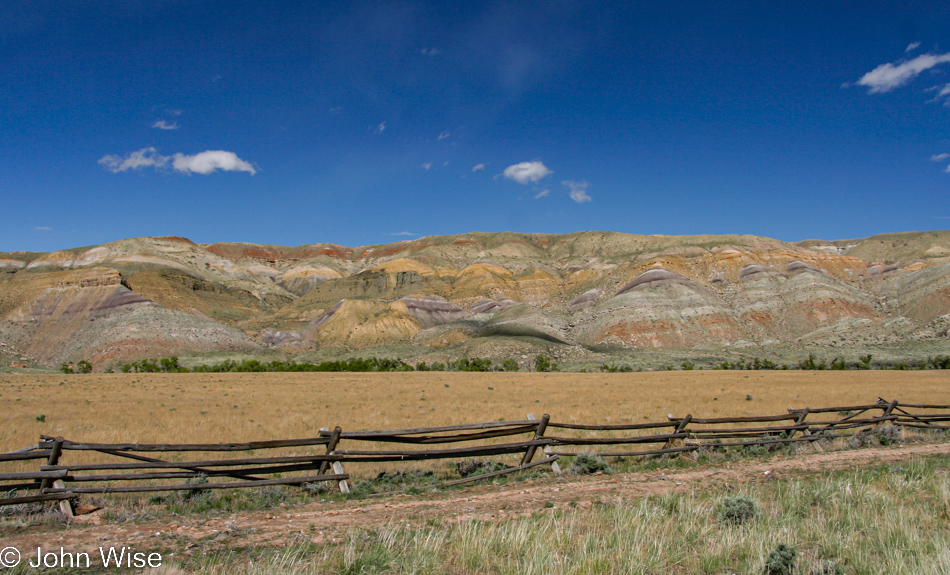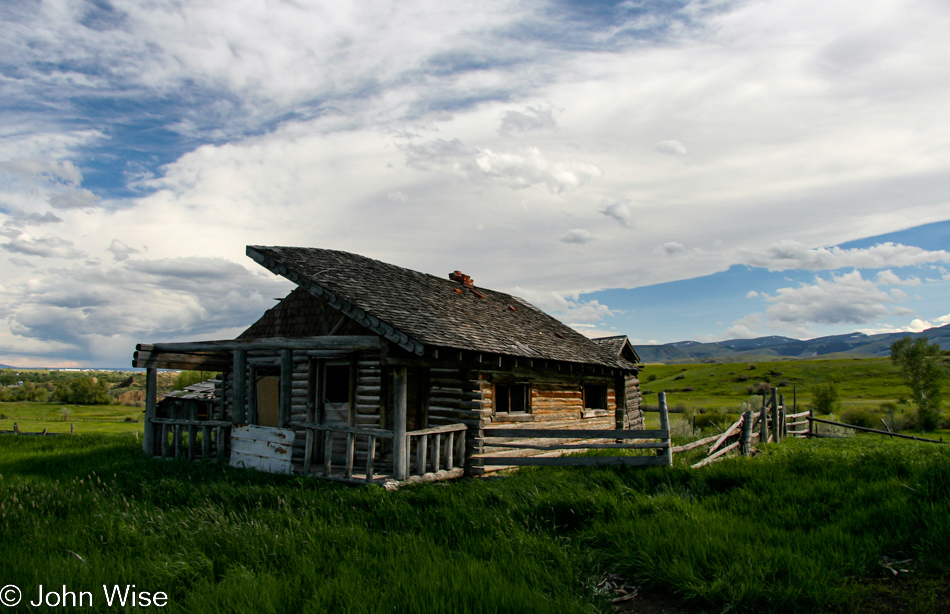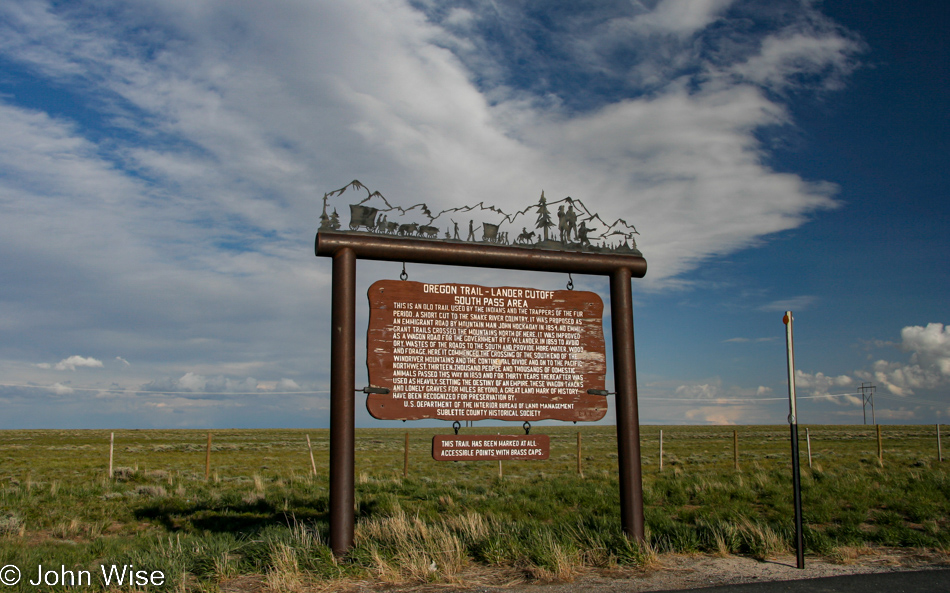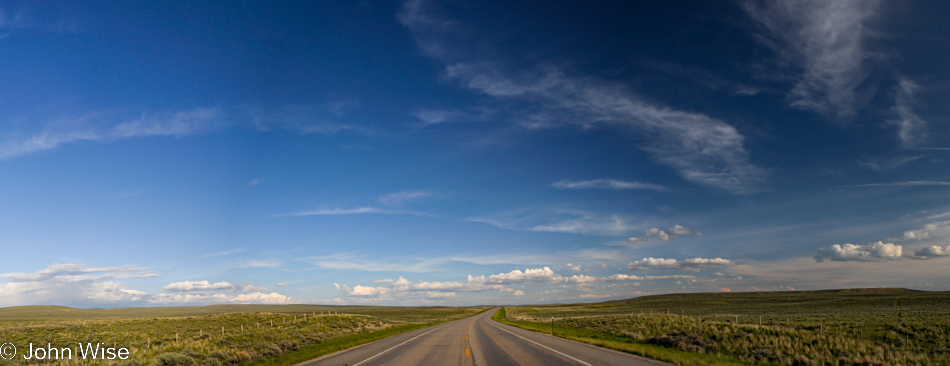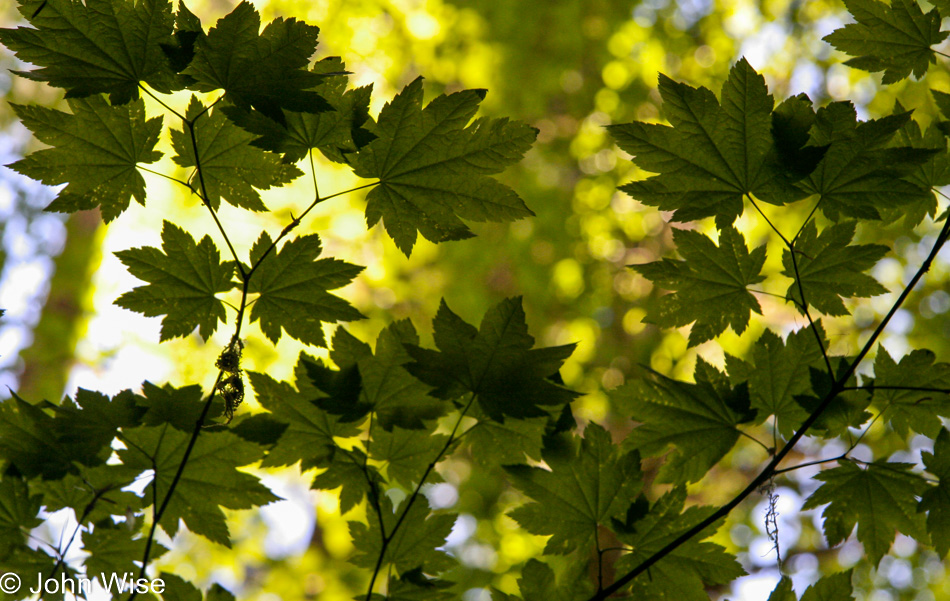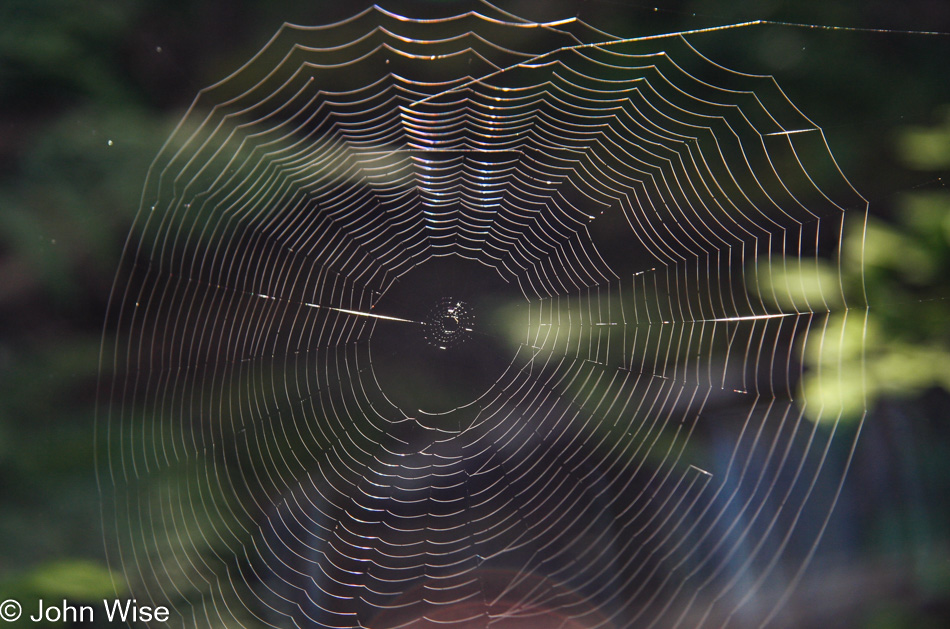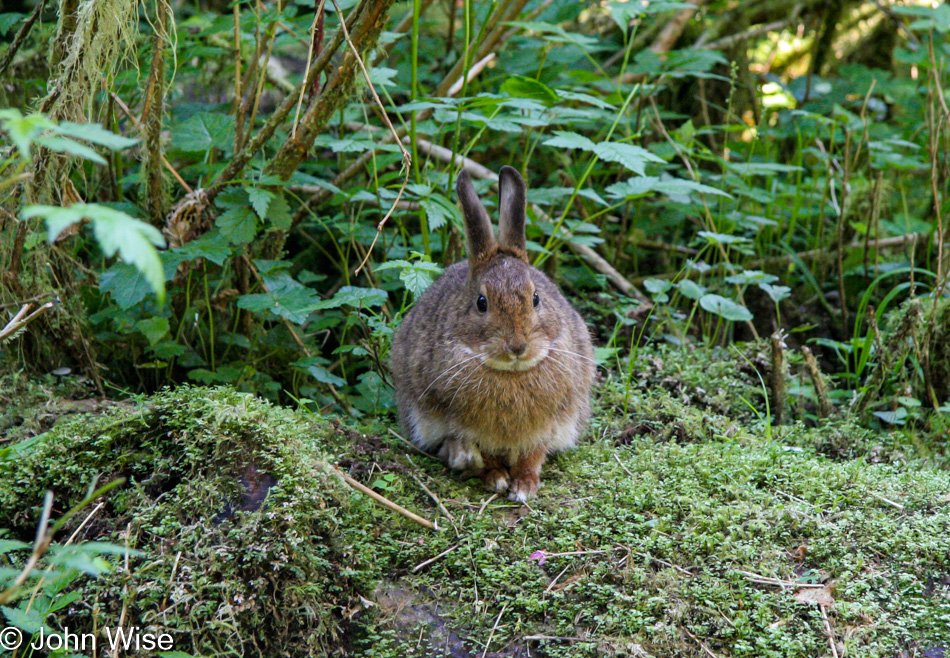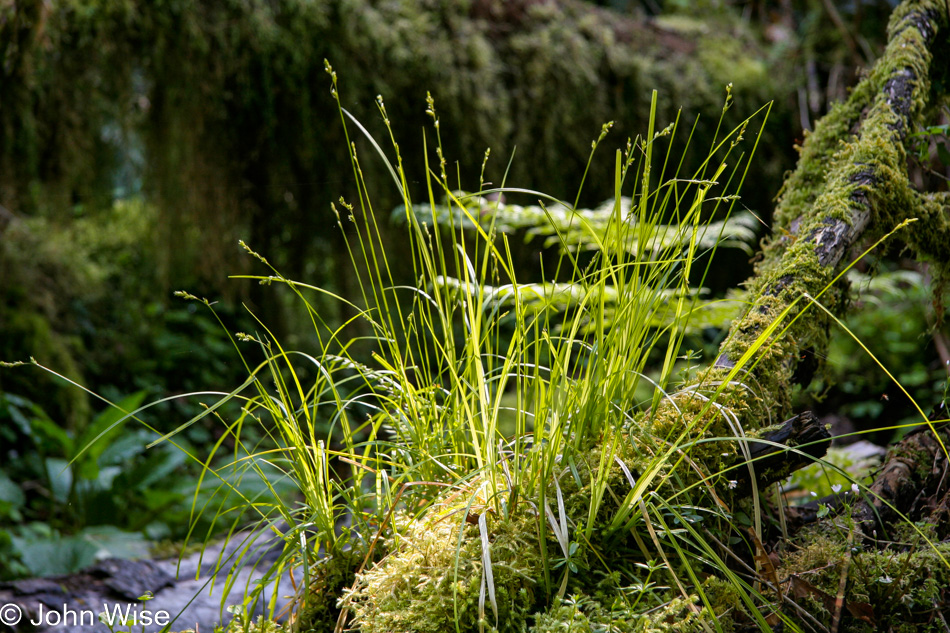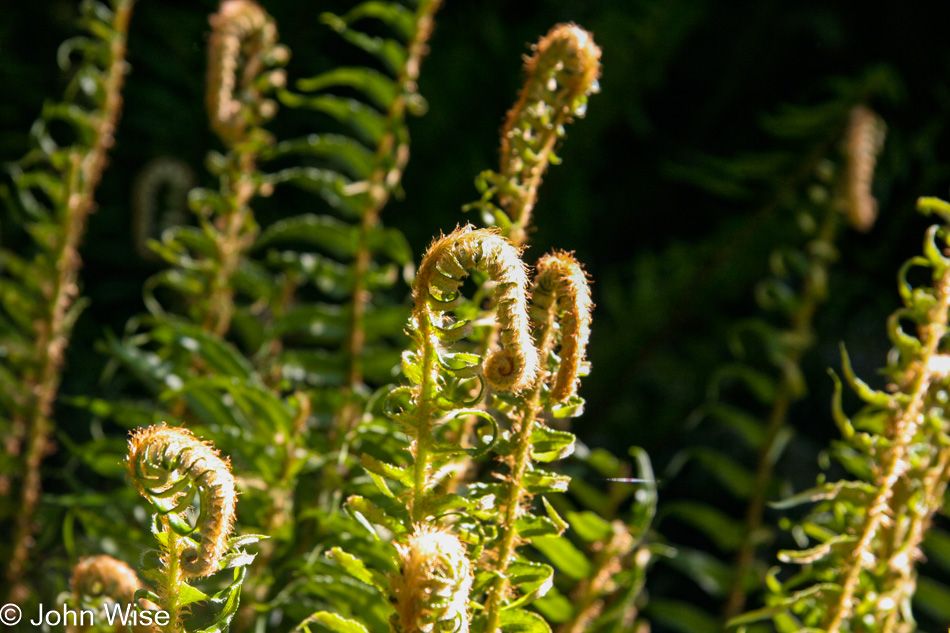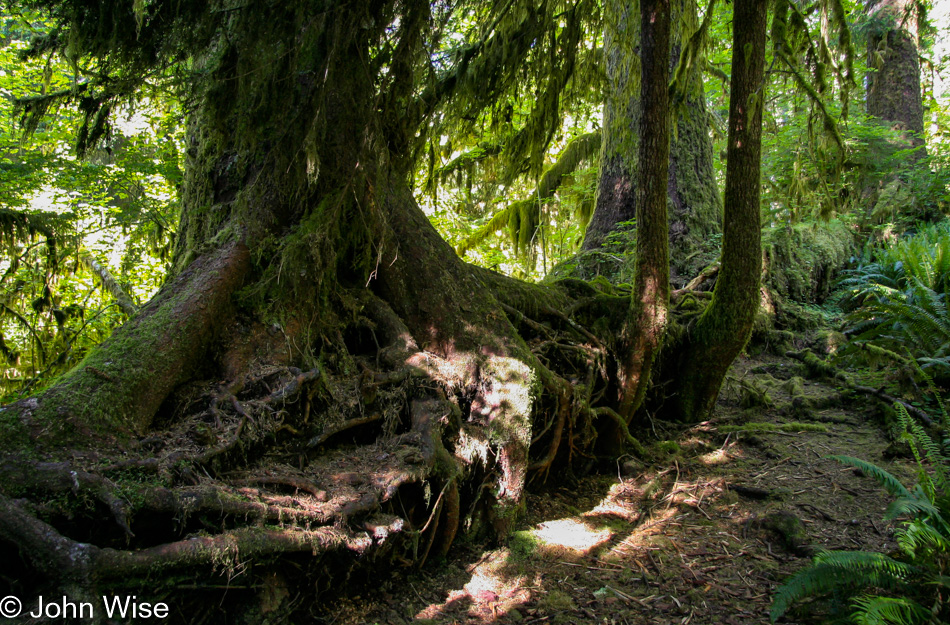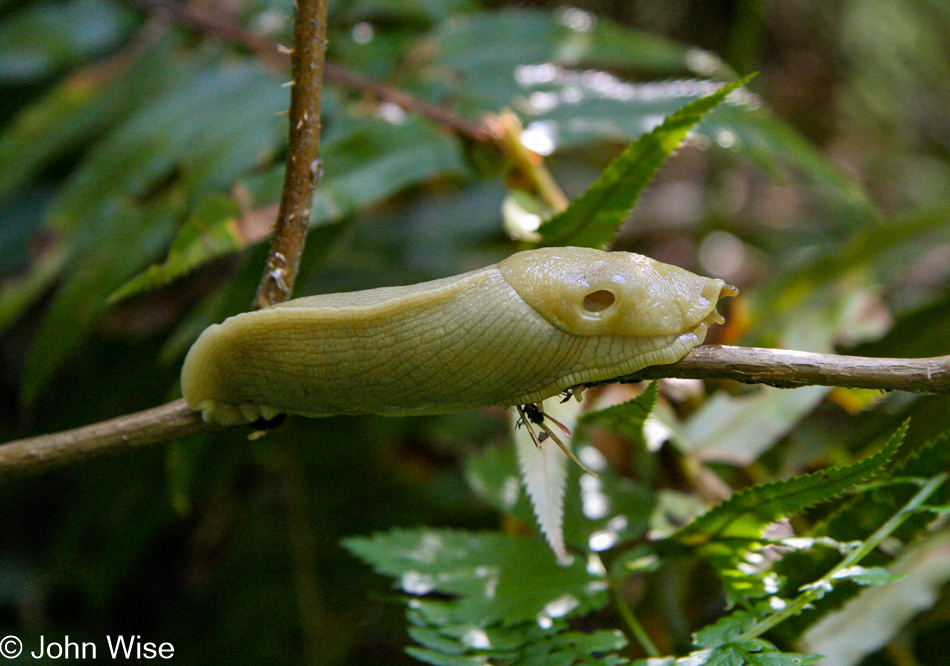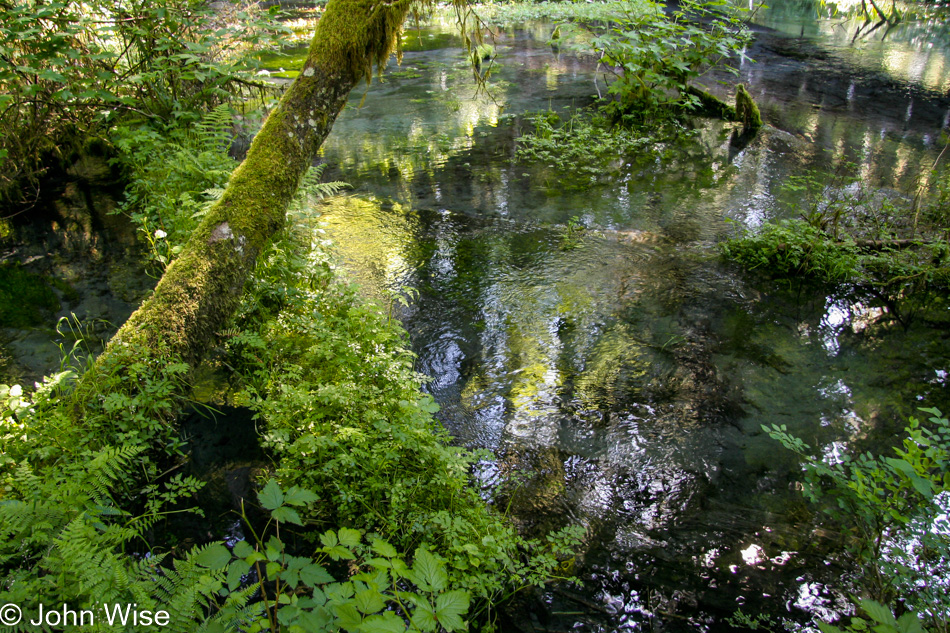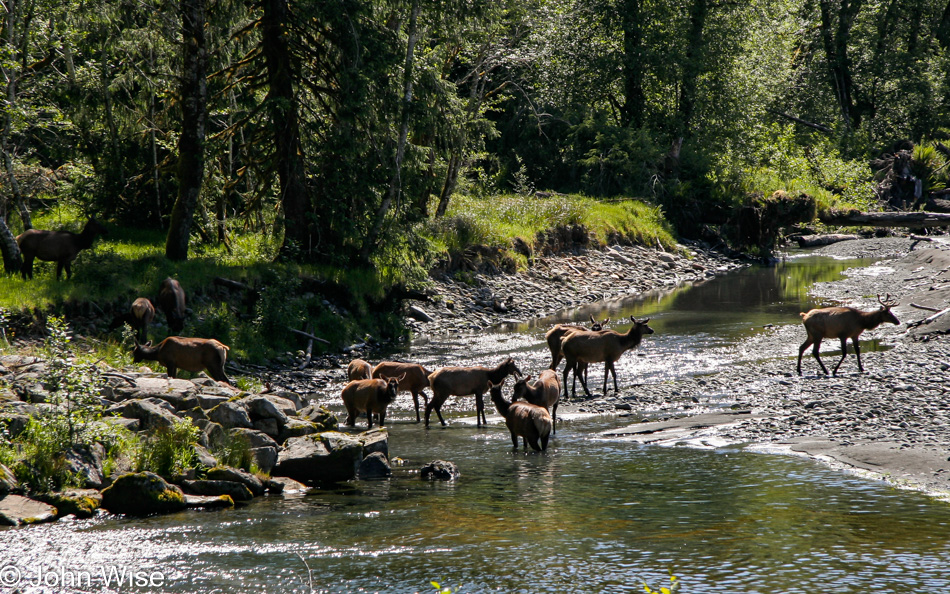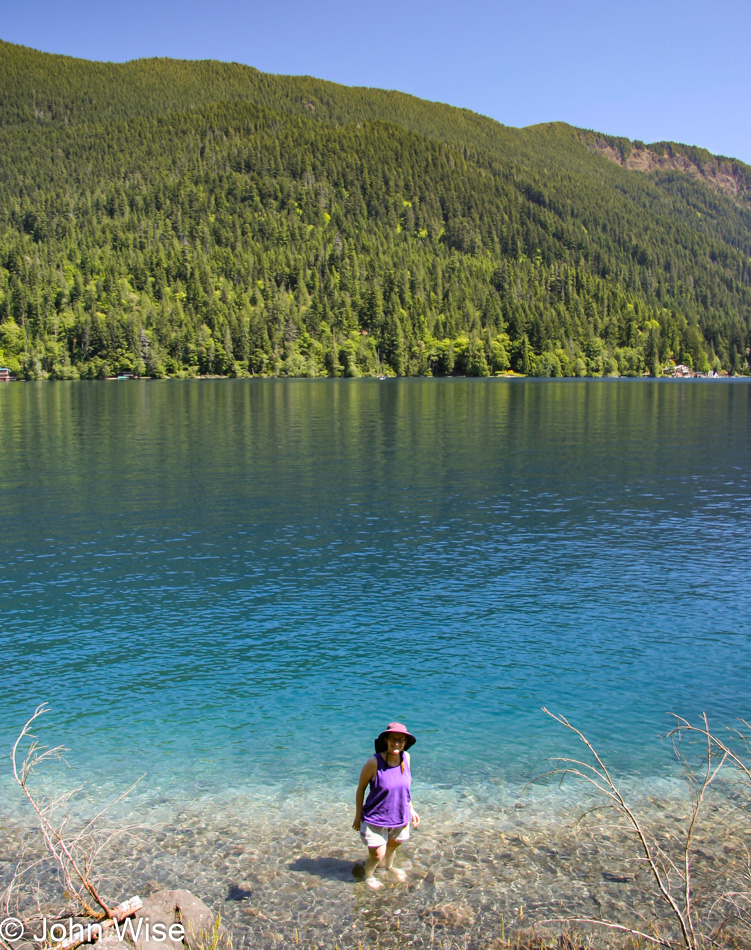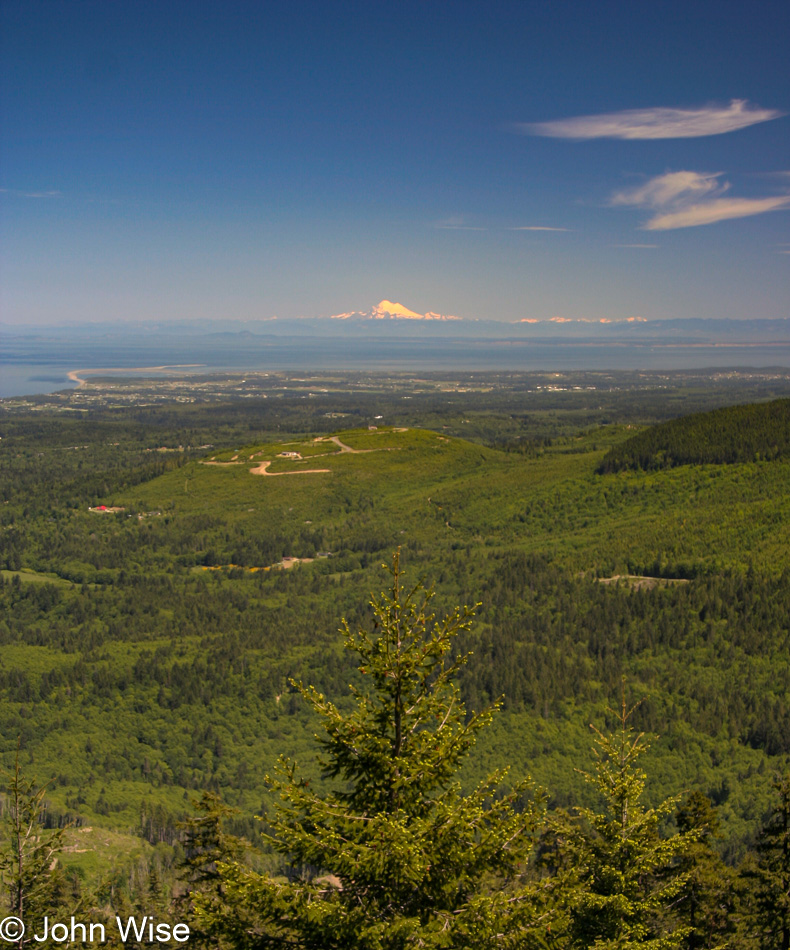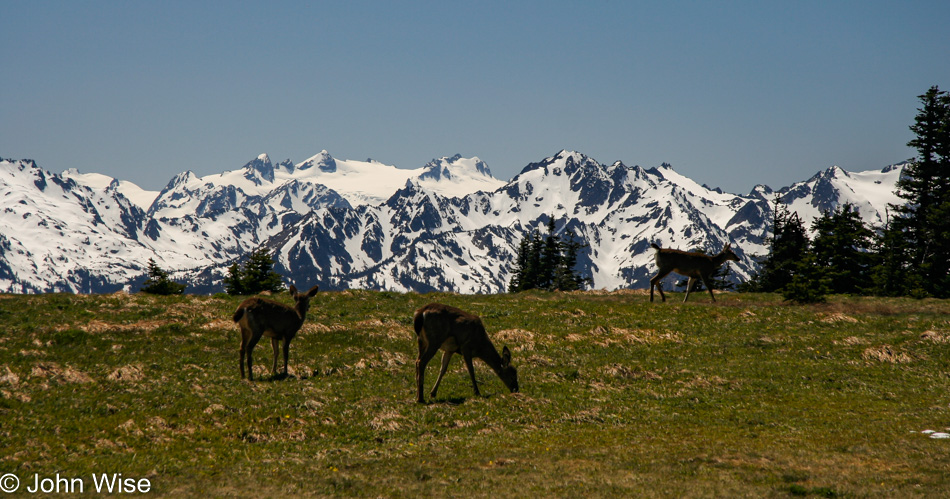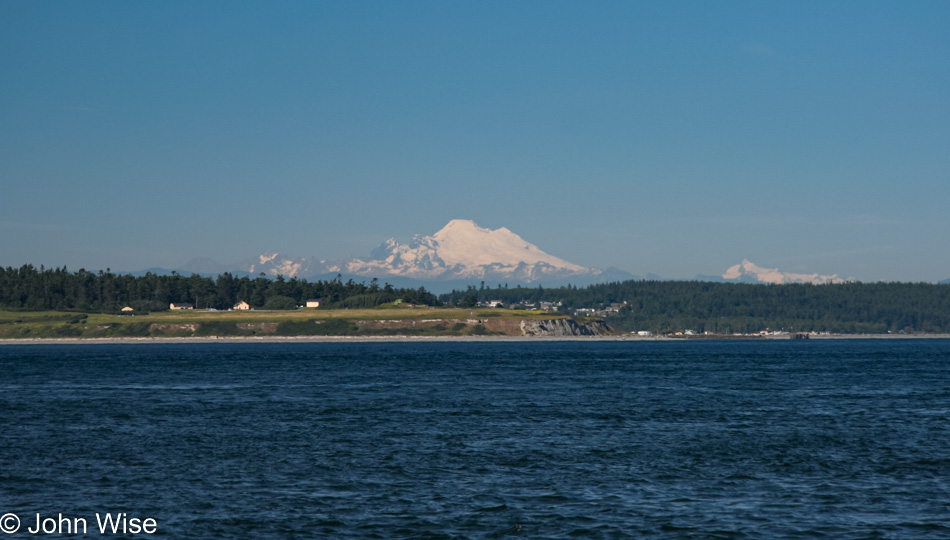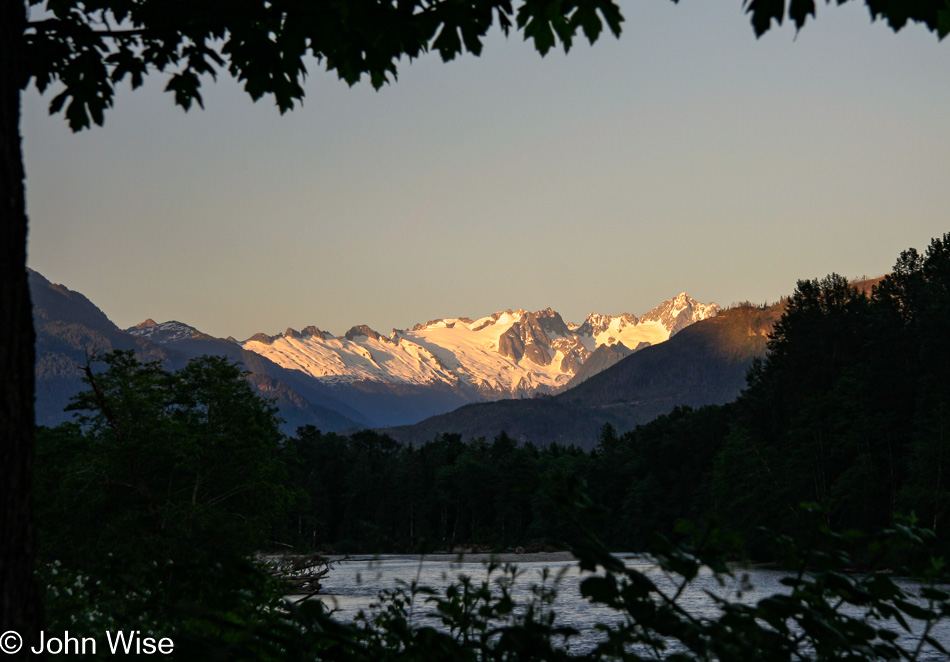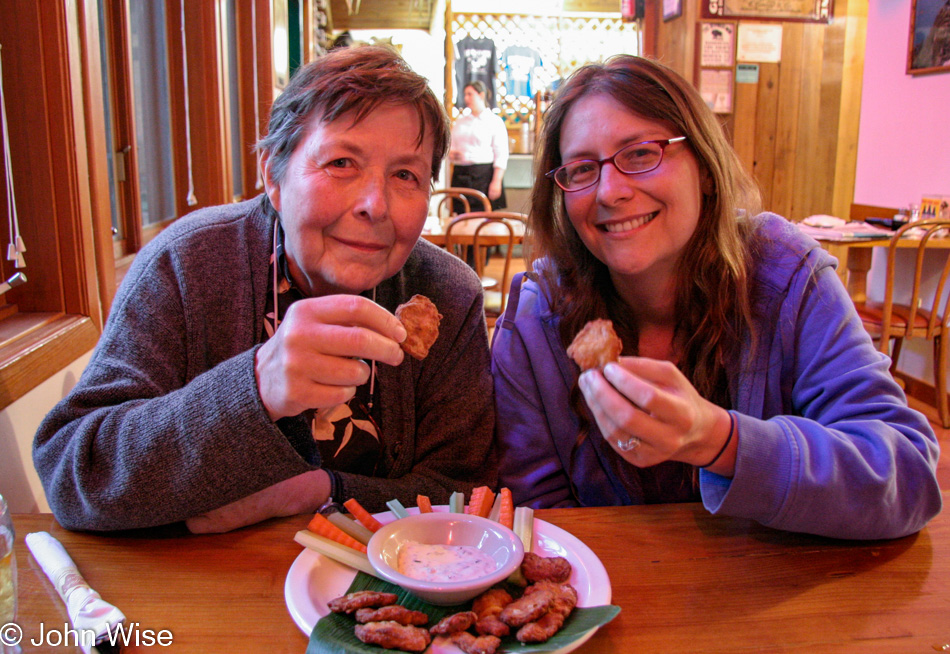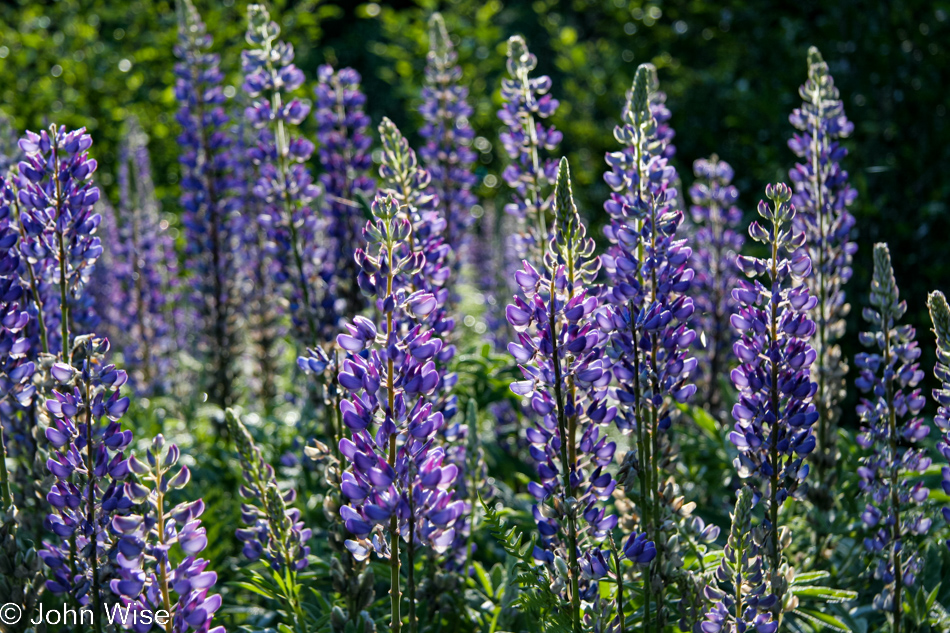
Disclaimer: This blog entry wasn’t written until 17 years after the trip. It should be noted that it was a huge mistake to have not written it way back when. Sometimes, after writing so much about other days, it happens that at the time directly after the trip (or even during), I convince myself that the details are not that important. Years later, these details are that important, and pulling them out of foggy memories is difficult. The photos help and often leave clues, and then Caroline’s memories are usually far clearer than mine. With that said, here goes.
We wake up in a place that’s new to all of us. Nobody here on this adventure has any experience of what to do once the day begins in Concrete, Washington, about 40 miles south of the Canadian border. Well, I have a general idea, that’s to continue our drive eastward.
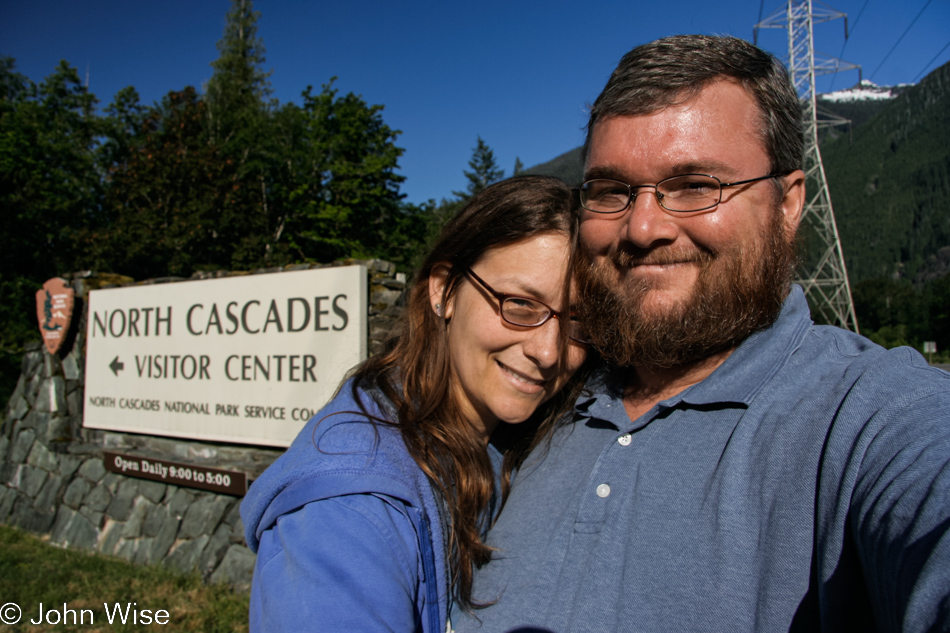
Adding a new national park to the list of these American treasures we’ve been so fortunate to visit, here we are at the North Cascades National Park today.
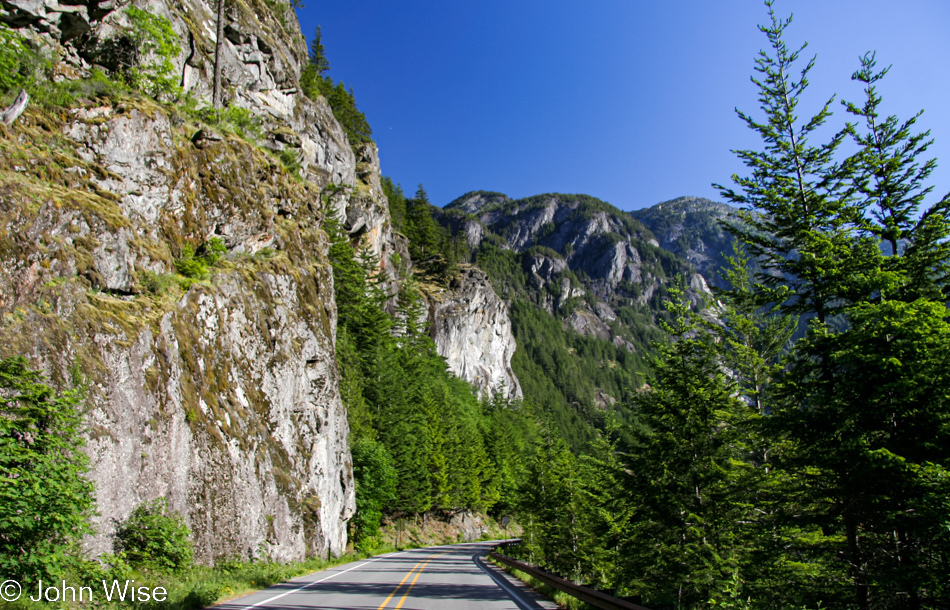
While everyone’s heard of the Grand Canyon, Yellowstone, and Yosemite, I don’t know of anyone who’s told us that we just had to visit the North Cascades. Might this be one of the United State’s best-kept secrets, or is it like Alaska and too difficult to get out here?
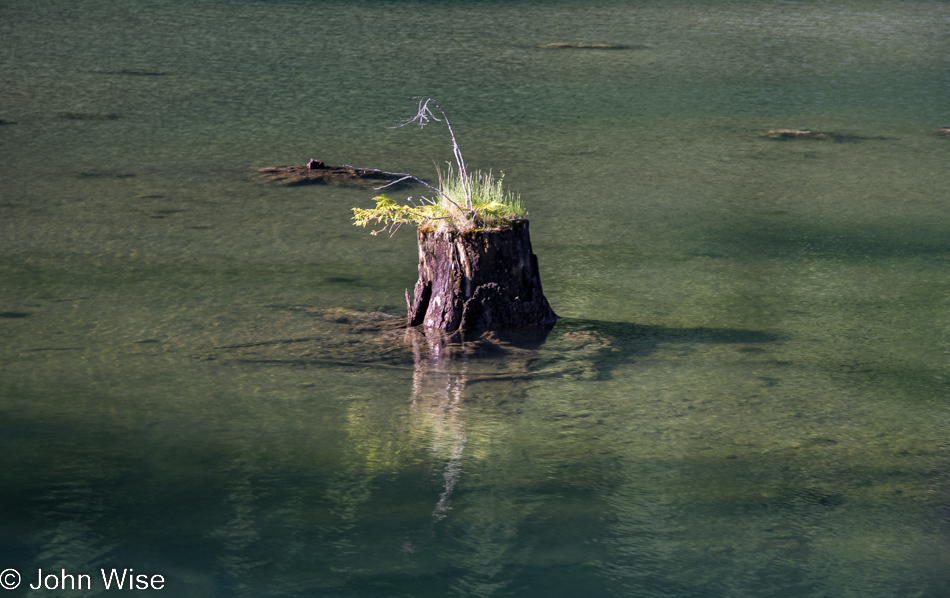
We’re at Gorge Lake, fed by the Skagit River; just out of sight are some high-tension powerlines; who built powerlines through a national park?
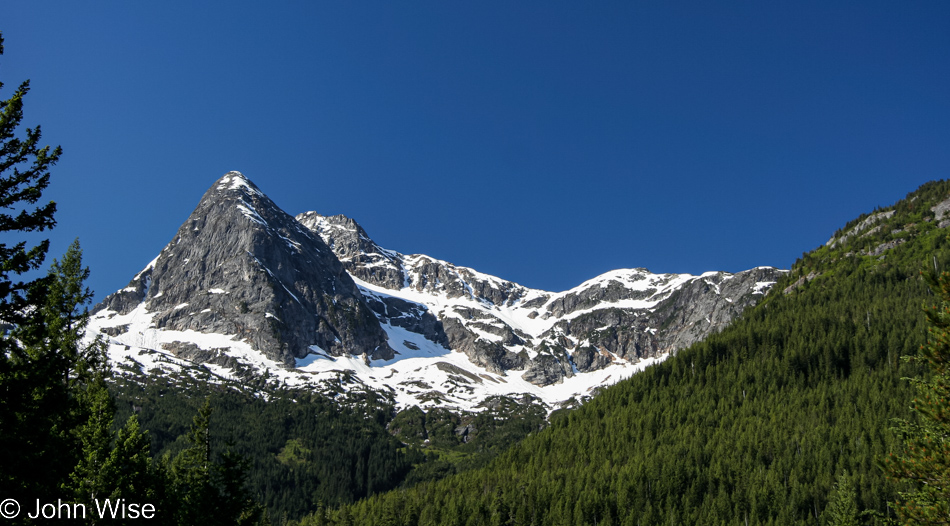
On one hand, it’s a shame that back during these days of moving quickly through these environments, we’d race through, take in an overview, and move on. With Jutta traveling with us, it wasn’t any better or worse as our methods of taking inventory had us thinking we’d scope the amazing places we want to return to, and then at a future point, we’d do just that. That hasn’t always worked out, such as with the North Cascades.
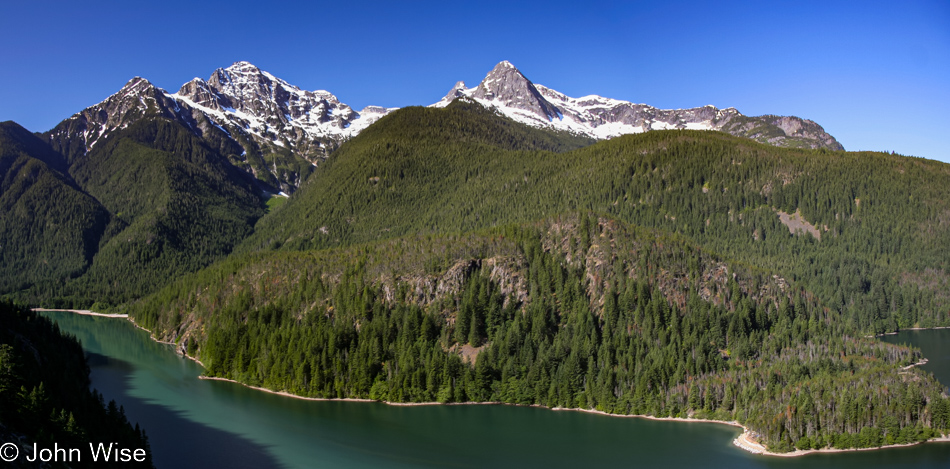
Looking through these memories, I’m struck by how beautiful this place is and wonder if Caroline and I shouldn’t consider putting a trip to Seattle on the itinerary, renting a car, and combining a return visit with another trip to nearby Olympic National Park too so we might get to do some hiking in these areas and feel like we’ve seen something more than what can be gleaned from a pullout on the road.
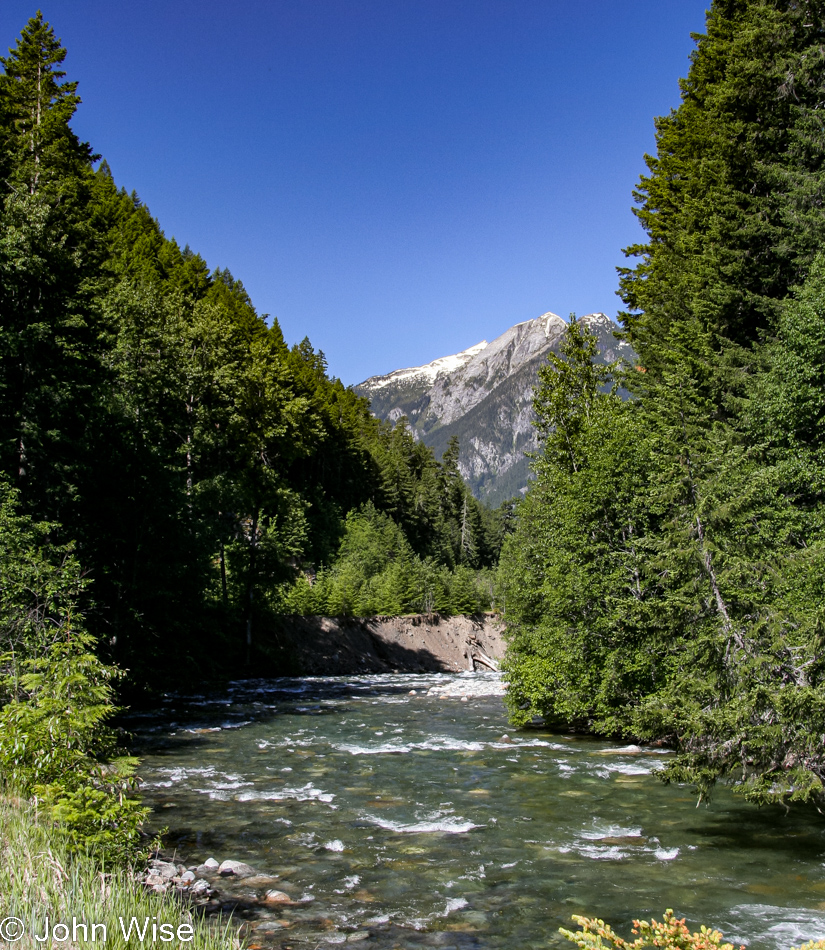
Off on a tangent, I went, where were these peaks and streams? If I do plan for a return, say in 2023, where should I look for trails for us to hike?
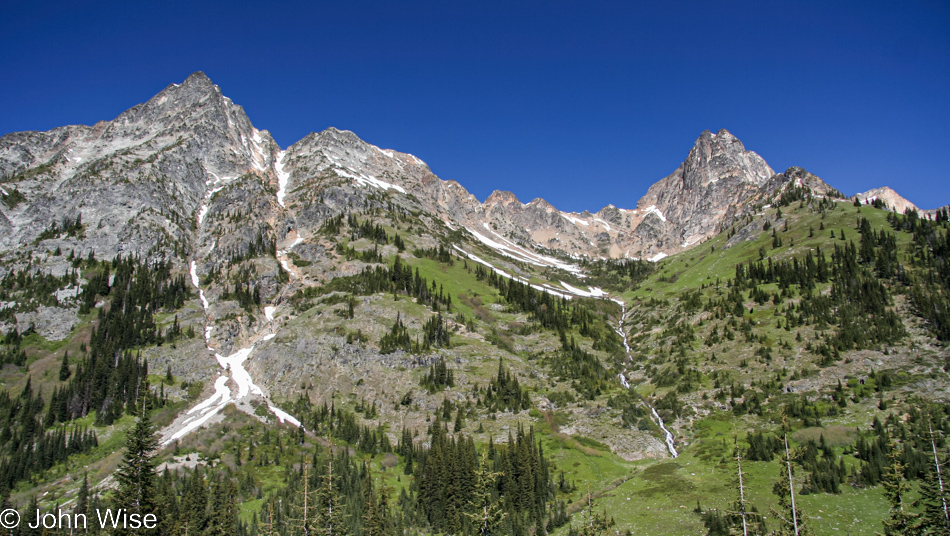
Maybe a little too much elevation gain would be required to hike to the top of the treeline, but I could think of worse ways to spend a day.
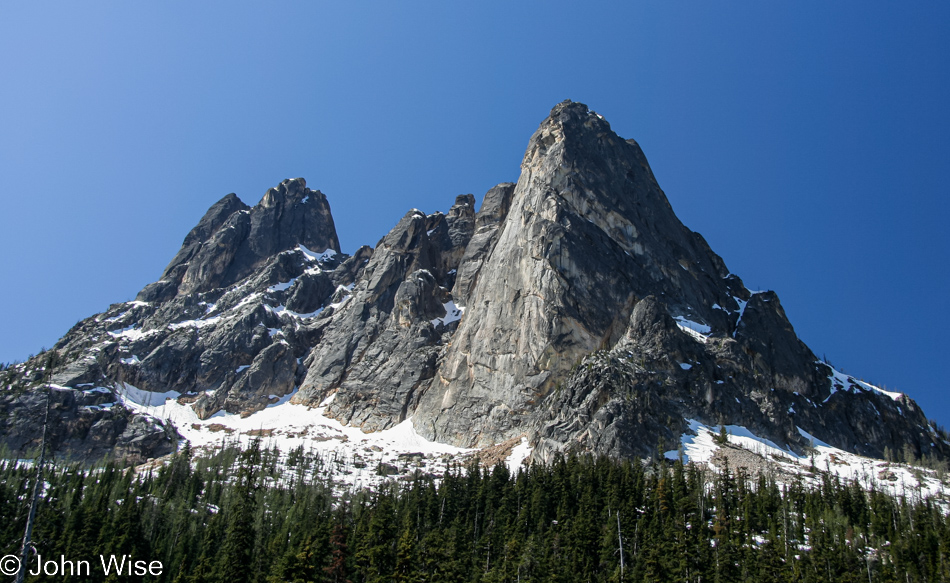
I believe this is Mt. Terror, strangely named, I think, but then again, I’m never going to try to ascend its peak.
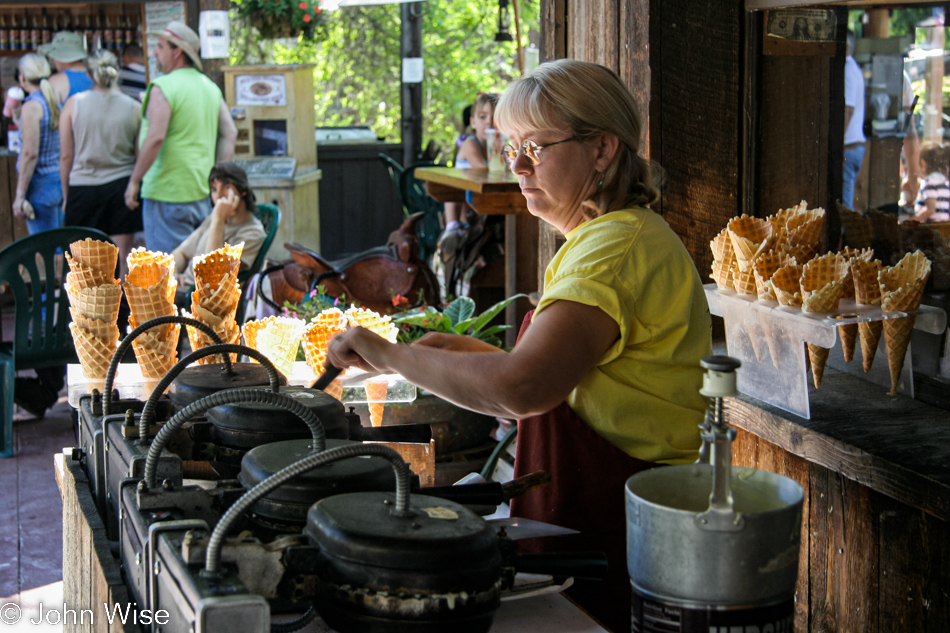
We left the park and drove east as my crazy ambition was to have us visit Glacier National Park tomorrow; this is just nuts. And though we might be rushing through the landscape, we still have time to stop for a woman making waffle cones for homemade ice cream in the quaint town of Winthrop.
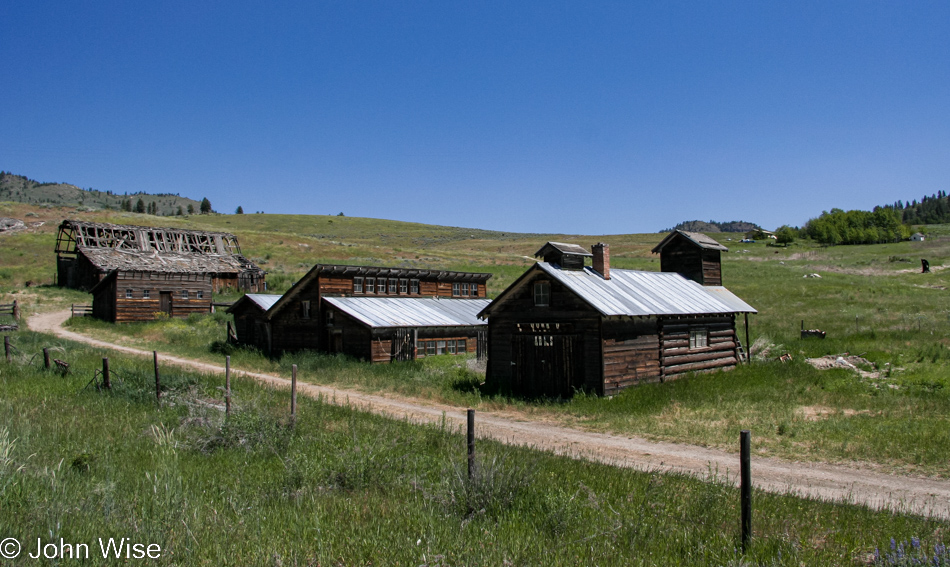
Time for old farm buildings bordering on decay? Always.
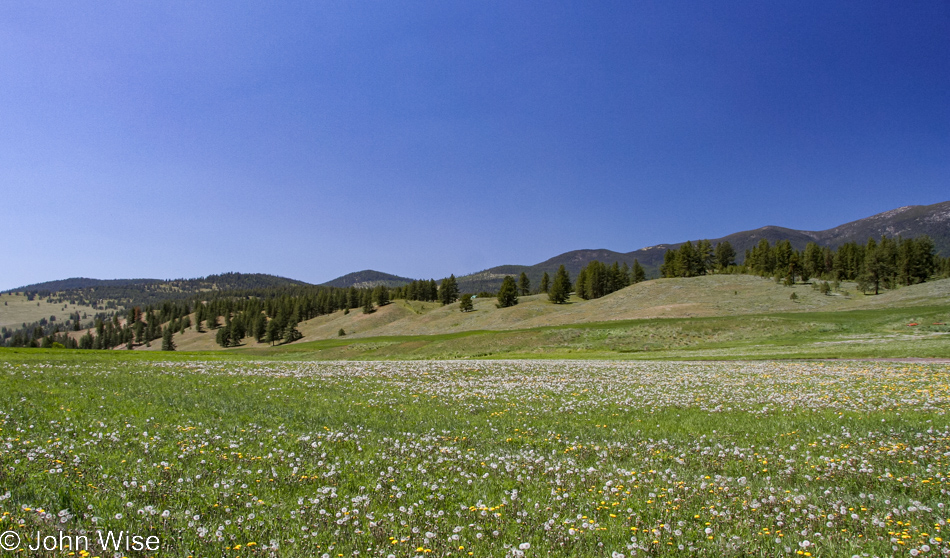
While we may not have taken enough time to truly linger in the flora of eastern Washington, I’ll certainly try to capture enough of the sights so we can remember that we were at one time in places that might have failed to lock into our mind’s eye quite the way Yellowstone or the Oregon Coast has.
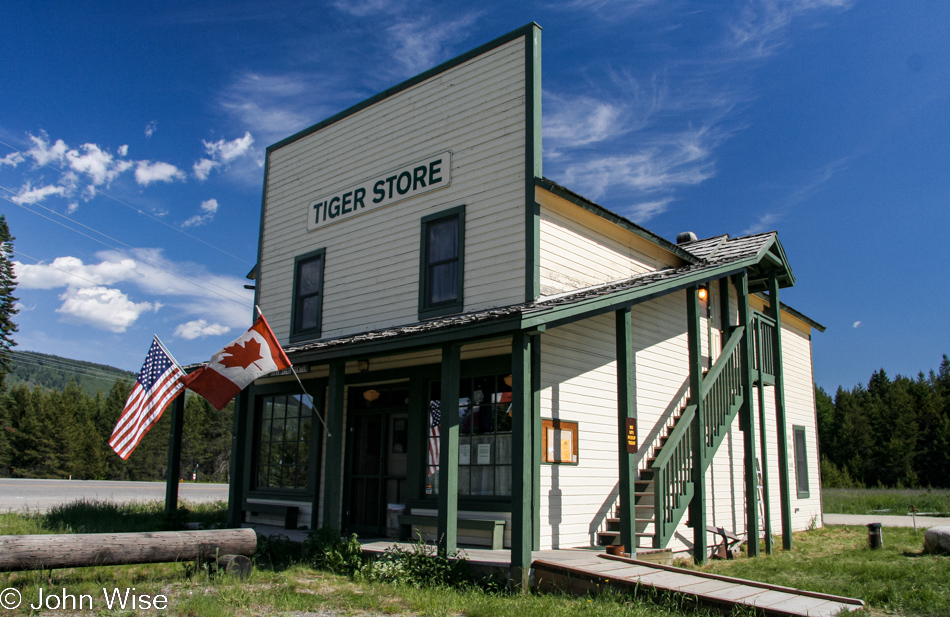
Tiger Historical Center and Museum required a stop at the request of my mother-in-law. You see, the Engelhardt’s have what you might call spirit animals associated with them or animals they grew up loving. For Caroline, that would be the snail; for her sister Stephanie, it is the mighty mouse; and for Stephanie’s husband Klaus, it is the tiger.
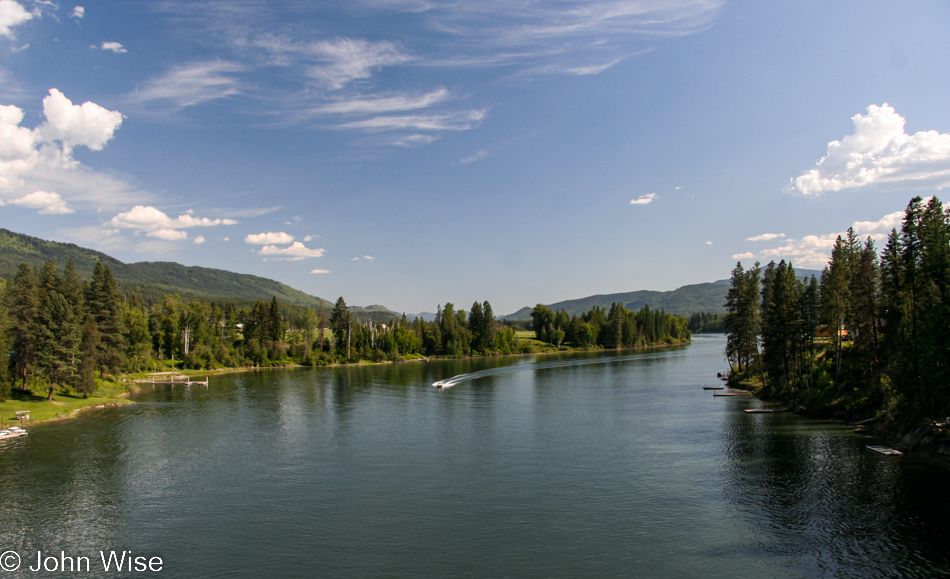
This is the Columbia River, and at the time of this writing, in 2022, I can’t remember in what year back in the early 2000s Caroline and I first traveled the Columbia between Oregon and Washington, but looking at this image here I’m left thinking how different this northeast part of the river looks when compared to it entering into the Pacific Ocean at the Columbia Bar.
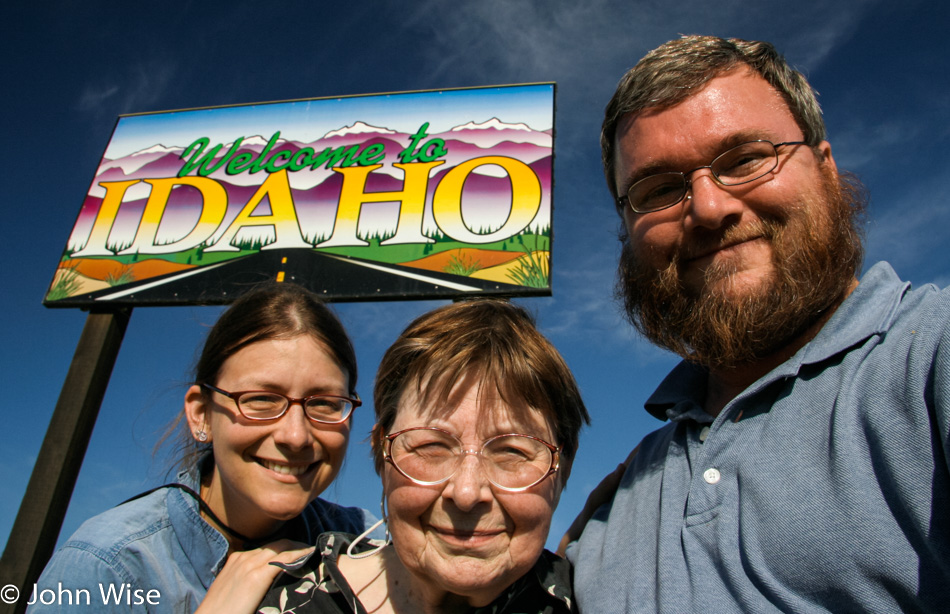
Taking these selfies at state lines was not always easy as the state signs themselves were not put up in consideration of sun orientation and time of day when you might be asking people with sensitive blue eyes to look, so I’ve taken plenty of squinty-eyed photos of these two women.
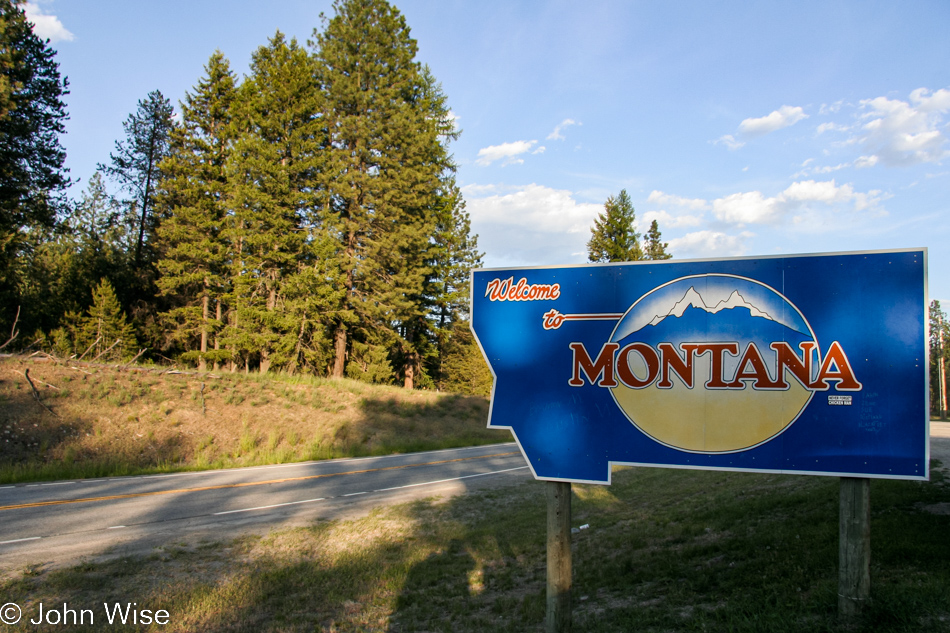
Then there’s the camera operator error and not recognizing that we were all too blurry to be able to use the selfie. If you are wondering what happened to Idaho and our driving across it, there were photos but nothing worth sharing.
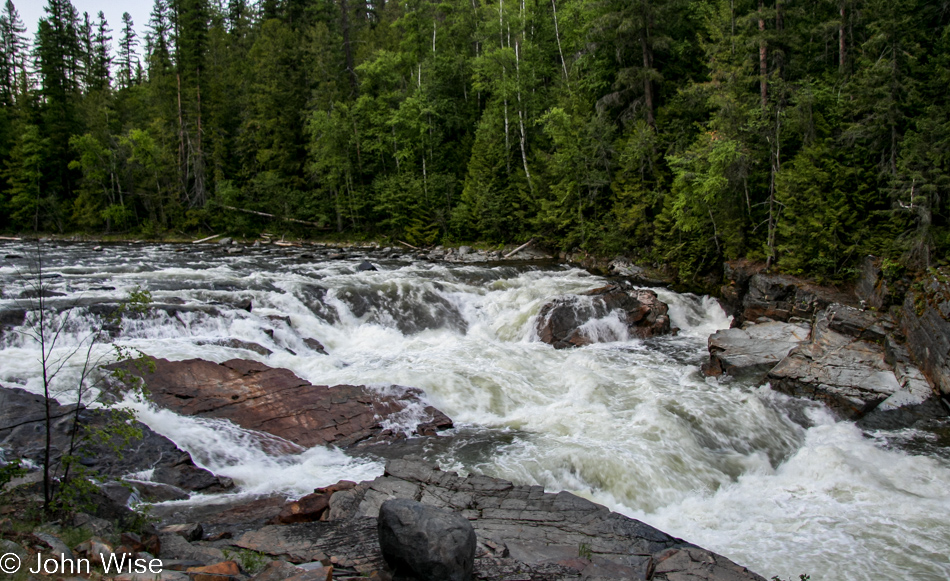
Do not listen to sentimental music when exploring old memories; as I try to write about our moment here at the banks of the Kootenay River, the music in my ears renders a solemnity on the verge of sadness about the man I was as I applied a fierce intensity of moving us through such beautiful places instead of taking the appropriate amount of time to let it all sink in. Now that I’m older, I can better see the world through my mother-in-law’s eyes, and back then, on this trip, she was already 70 while here at the cusp of my turning 60; I’m enjoying our newer go-slow approach. I suppose this was the price to be paid when hanging out with your children still ripping through the world with a take-no-prisoners approach to life.
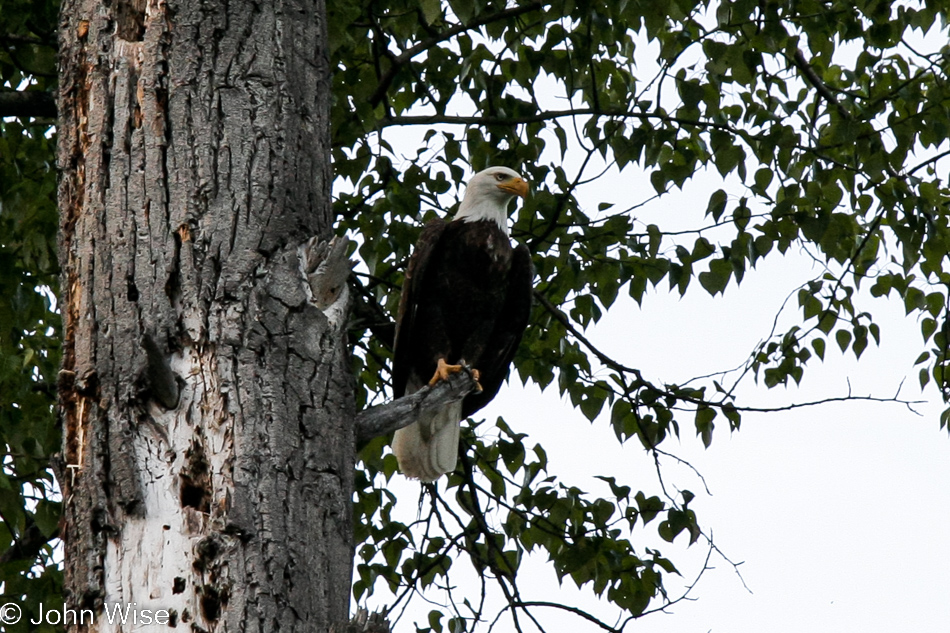
Just in front of our car, as we passed the Yaak River, an American Bald Eagle swept across the road and perched in a nearby tree. I stopped as quickly as possible, certain I was frightening away the eagle. Caroline jumped from the car with the camera in hand, and to our surprise, the eagle sat patiently posing while Caroline clicked away. Wow
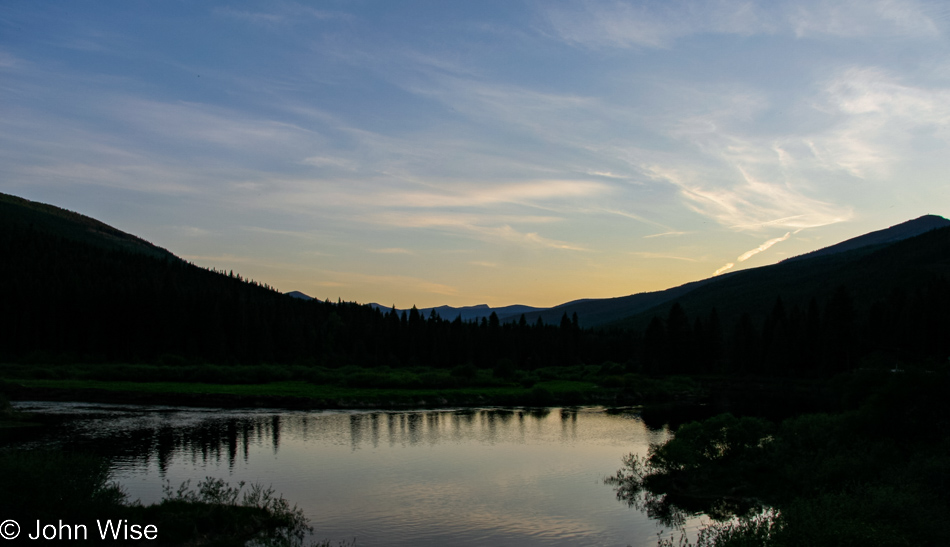
The Tobacco River near Eureka, Montana, at sunset was near our cheap motel. While the lodging might have been a bit on the shoddy side, the views never are.



